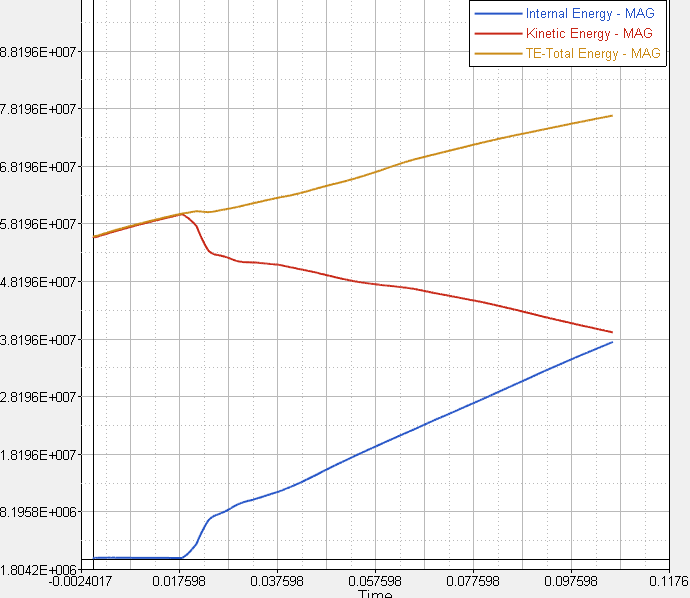i'm trying to carry out a drop test with a body having initial velocity,
as soon as the the specimen impacts the ground the internal enrgy rises but kinetic energy of model is not reducing in that manner
there is overall very high rise in total energy although the body is in proper contact with ground
total energy curve isn't remain constant or stable as soon as body touches ground.